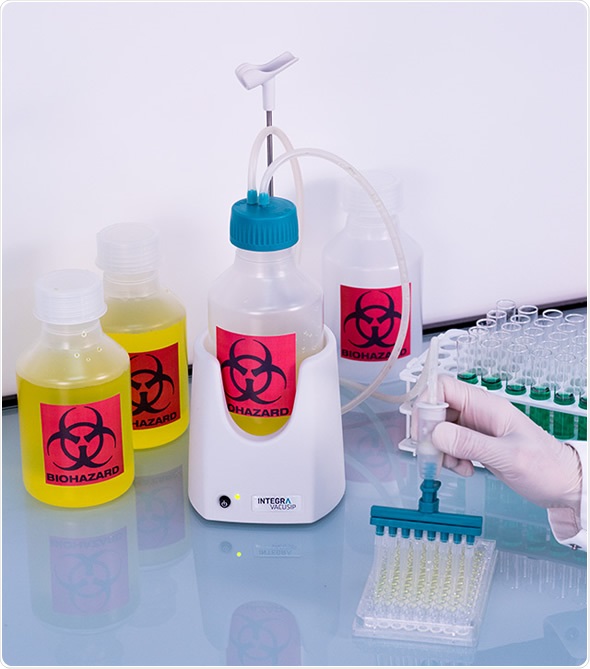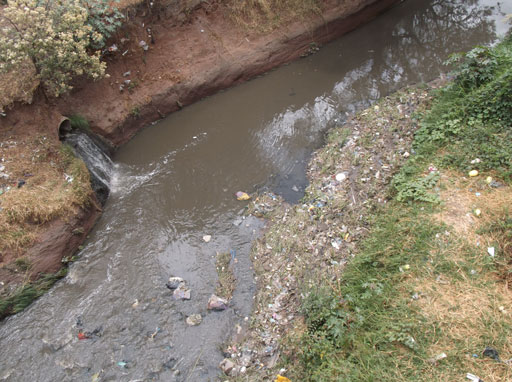Innovative Industrial Wastewater Treatment Solutions: Safeguarding the Atmosphere
Innovative Industrial Wastewater Treatment Solutions: Safeguarding the Atmosphere
Blog Article
Recognizing the Comprehensive Refine of Liquid Waste Disposal: Finest Practices and Environmental Influence Considerations
The monitoring of liquid waste disposal is a multifaceted problem that needs a comprehensive understanding of numerous ideal methods and their associated environmental effects. From the kinds of liquid waste generated to the approaches employed for collection, therapy, and last disposal, each step plays an important function in guarding communities and public health and wellness. As regulatory criteria evolve and innovation developments, the conversation around these processes ends up being increasingly relevant. What effects do these modifications hold for future sustainability initiatives, and how can stakeholders make sure that they are sufficiently addressed?
Sorts Of Fluid Waste
Understanding the different kinds of liquid waste is important for reliable management and disposal techniques. Liquid waste can be broadly classified right into several kinds, each requiring one-of-a-kind handling and therapy strategies.
Industrial fluid waste commonly contains unsafe products, including heavy metals, solvents, and chemicals, created throughout manufacturing processes. These wastes demand stringent regulatory conformity to secure human wellness and the setting. Domestic fluid waste largely describes wastewater created from families, consisting of sewer and greywater, which, although less toxic, can still pose significant threats if poorly handled.
Agricultural liquid waste, including runoff from farms, usually contains plant foods and chemicals that can result in environmental destruction if not dealt with properly. Medical liquid waste, produced from medical care facilities, includes infected fluids such as physical fluids and chemicals, needing specialized disposal approaches to avoid infection and environmental contamination.
Finally, oil and oil waste, generally created by restaurants and automotive industries, can trigger serious blockages in sewage system systems if not taken care of properly. Recognizing these classifications promotes targeted methods for therapy, conformity with regulations, and efficient disposal techniques, ultimately promoting environmental sustainability and public wellness safety.

Collection Methods
Effective collection techniques are critical for the proper monitoring of liquid waste, guaranteeing that it is gathered securely and effectively prior to treatment or disposal. Numerous methods are utilized depending upon the type of liquid waste created, the volume, and the certain qualities of the waste.
One typical approach is making use of specialized collection tanks or sumps, which are made to catch fluid waste at the source. These systems frequently include pumps that help with the transfer of waste to larger storage space containers or treatment facilities. Furthermore, mobile collection units equipped with vacuum innovation are used in situations where waste is produced intermittently or in hard-to-reach locations.
For industrial settings, closed-loop systems can successfully decrease spills and leaks, permitting the recovery and reuse of fluid waste. It is likewise important to educate employees on proper collection protocols to reduce dangers associated with hazardous compounds.
In addition, executing routine upkeep routines for collection devices makes sure optimum performance and security. The combination of innovative tracking systems can enhance collection efficiency by providing real-time data on waste levels and potential dangers. Overall, efficient collection techniques are fundamental to sustainable liquid waste monitoring practices.
Treatment Processes
Therapy procedures play an important role in the management of liquid waste, transforming possibly hazardous products into recyclable resources or safe effluents - liquid waste disposal. These processes can be extensively classified right into physical, chemical, and organic approaches, each tailored to attend to certain pollutants present in the waste stream
Physical Visit Website treatment approaches, such as sedimentation and purification, job by eliminating suspended solids and particulate issue. These methods are usually the initial action in the treatment chain, effectively reducing the lots on succeeding processes. Chemical treatments entail using reagents to counteract harmful materials, speed up heavy steels, or oxidize natural great post to read contaminants, therefore boosting the security of the effluent.
Biological therapy procedures, including turned on sludge systems and anaerobic digestion, exploit on the all-natural capacities of bacteria to deteriorate natural matter. These approaches are specifically efficient for wastewater containing eco-friendly pollutants. Advanced therapy technologies, such as membrane layer filtering and progressed oxidation procedures, are significantly employed to accomplish greater degrees of purification.
Integrating a mix of these therapy methods not only makes sure conformity with regulatory standards however additionally promotes environmental sustainability by recouping valuable resources from liquid waste.
Disposal Options
Exactly how can companies make certain the responsible and risk-free disposal of liquid waste? Efficient disposal alternatives are crucial for protecting public health and wellness and the setting. The key approaches consist of land treatment, incineration, and disposal complied with by discharge into local wastewater systems.
Land disposal includes the cautious control of fluid waste in assigned garbage dumps, making sure that it does not leach right into bordering dirt or water. Incineration, on the various other hand, subjects liquid waste to high temperatures, converting it into ash and gases, which require correct purification to decrease exhausts. This approach is appropriate for contaminateds materials that can not be dealt with with conventional means.
In cases where fluid waste can be dealt with, companies may go with biological or chemical therapy processes to reduce the effects of damaging components before releasing the dealt with effluent into municipal systems. This course commonly lines up with regulative requirements, ensuring that the effluent fulfills security standards.
Inevitably, companies should conduct thorough evaluations of each disposal option to establish its feasibility, thinking about factors such as waste make-up, regulative conformity, and prospective risks to health and wellness and the environment. By picking suitable disposal approaches, services can contribute to a liable waste administration technique.
Ecological Effect
The ecological effect of fluid waste disposal is a crucial factor to consider for organizations looking for to minimize their environmental footprint. Improper disposal techniques can cause considerable contamination of water resources, navigate to this website soil deterioration, and damaging effects on neighborhood communities. As an example, hazardous liquids can seep right into groundwater, positioning threats to alcohol consumption water supplies and water life. In addition, the discharge of neglected or improperly dealt with waste into surface waters can lead to eutrophication, bring about oxygen depletion and the subsequent death of fish and various other microorganisms.

To mitigate these impacts, organizations must take on ideal techniques such as carrying out extensive waste treatment processes, advertising recycling and reuse, and sticking to regulative standards. By taking a proactive approach to fluid waste monitoring, entities can dramatically minimize their environmental impact while sustaining sustainable development objectives. Eventually, an extensive understanding of the environmental impacts connected with liquid waste disposal is vital for informed decision-making and liable stewardship of all-natural sources.
Final Thought
Effective administration of fluid waste is essential for securing environmental stability and public wellness. Ultimately, an extensive understanding of liquid waste disposal not just mitigates environmental effects however additionally cultivates a commitment to responsible resource administration and ecological stewardship.
The monitoring of fluid waste disposal is a multifaceted issue that needs a detailed understanding of various best practices and their connected environmental effects. From the kinds of fluid waste produced to the techniques used for collection, therapy, and last disposal, each step plays an important duty in guarding ecosystems and public health.The environmental impact of liquid waste disposal is a crucial consideration for organizations seeking to minimize their ecological footprint. Ultimately, a comprehensive understanding of the ecological influences linked with fluid waste disposal is necessary for notified decision-making and accountable stewardship of natural resources.
Inevitably, a thorough understanding of fluid waste disposal not only reduces environmental influences yet likewise fosters a commitment to liable source administration and environmental stewardship.
Report this page